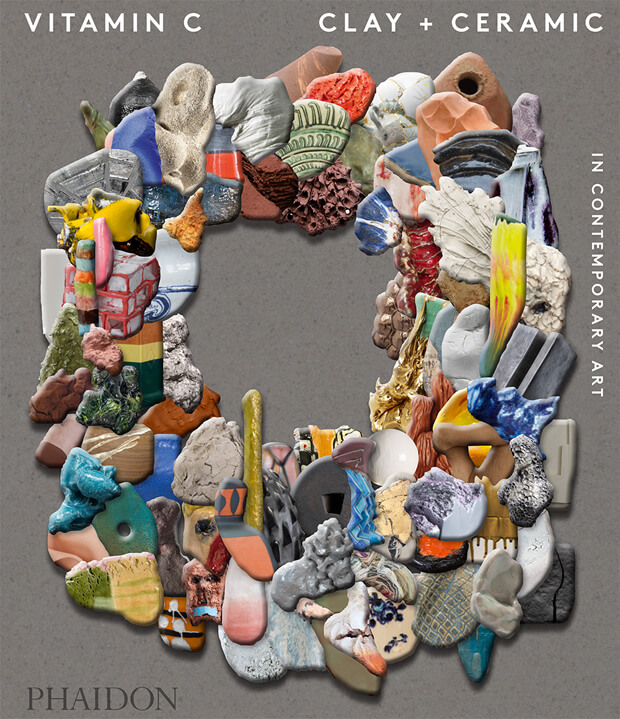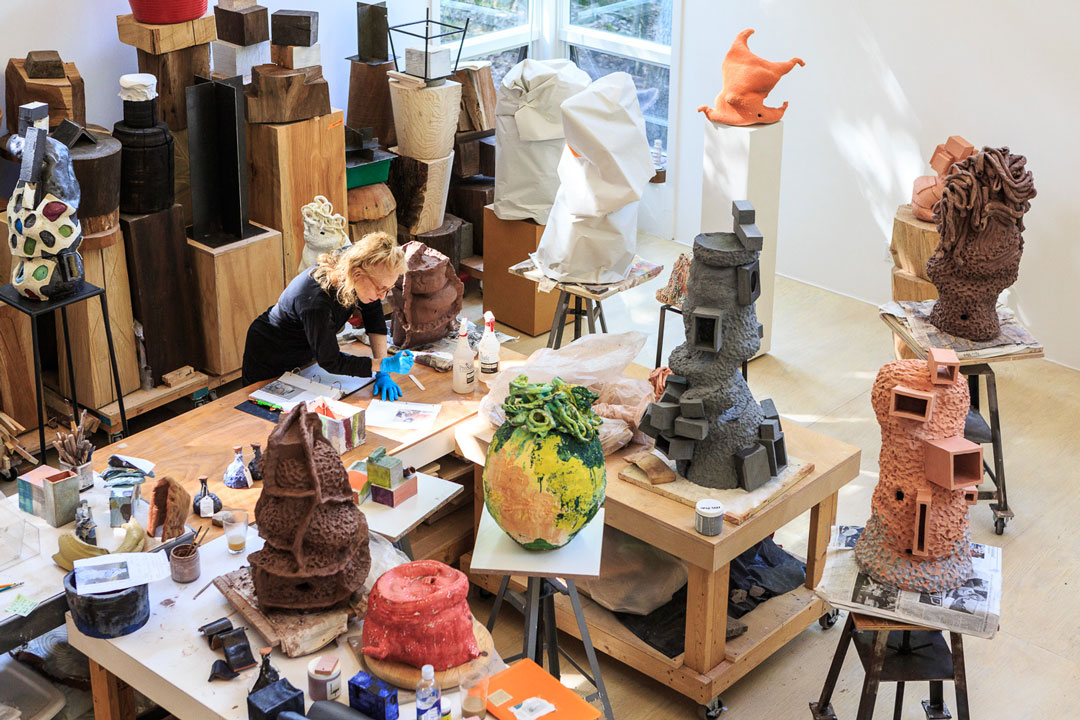
Arlene Shechet - Why I Create
Exploring the inspirations and attitudes of artists working with clay and ceramic, featured in Vitamin C
Voluptuous, brawny, delicate, precarious, magical. Such disparate words can describe the breadth of Arlene Shechet’s inventive and masterful sculptures, whether her early Buddha forms made of plaster and acrylic paint or her recent abstract sculptures rendered in ceramic and multiple glazes. Since her early days as a student at Rhode Island School of Design, Shechet has always been open to working in a variety of media.
Over the years, she has used materials as diverse as plaster, acrylic, cast paper, porcelain, wood and crystal. In 2006 Shechet began sculpting in clay. ‘Clay is extremely elemental. There’s nothing about it that is attractive or interesting," she says. "The lack of beauty in its raw state is important to me because it gives me great freedom. Because it has no character I can make anything. It’s just there to be invented." Here, the Vitamin C: Clay and Ceramic in Contemporary Art featured artist tells us why she works in the medium, what particular challenges it holds for her and who she thinks always gets it right.
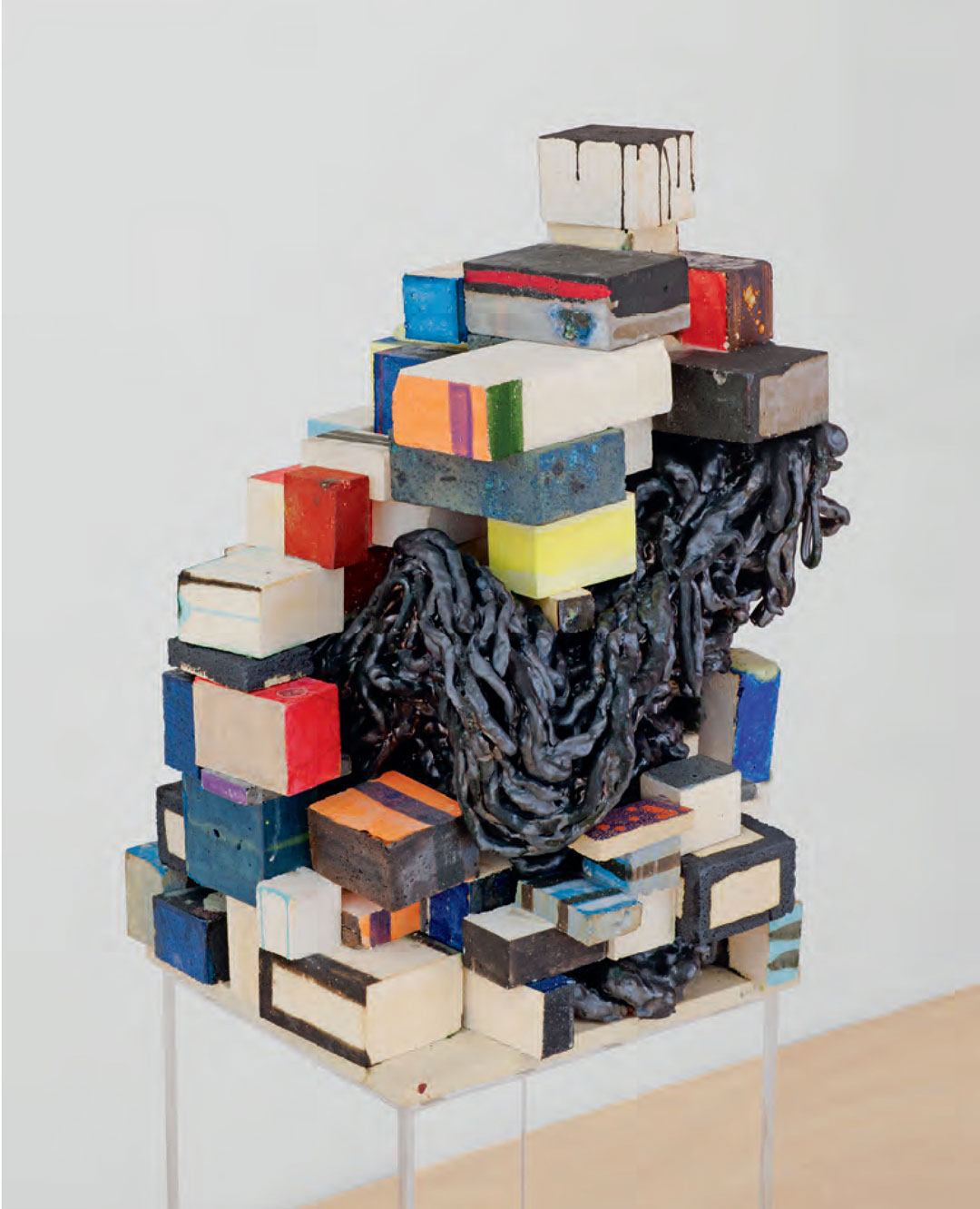
Who are you and what’s your relationship to clay and ceramics? I am a sculptor and clay is one of the materials I use.
Why do you think there’s an increased interest around clay and ceramics right now? I don’t know that there is such an increased interest. I think ceramics has always been alive and well in the world - certainly since Neolithic times - but I believe there’s fashion in everything and that things move in and out of being sought after, looked at, thought about. Sculptors have always sketched with clay as it is a great 3D drawing tool, and potters have always provided vessels for storing things and serving food. But recently contemporary painters have begun to understand the possibilities of glaze as liquid colour melting into form and experiencing that process as painting, which of course it is.
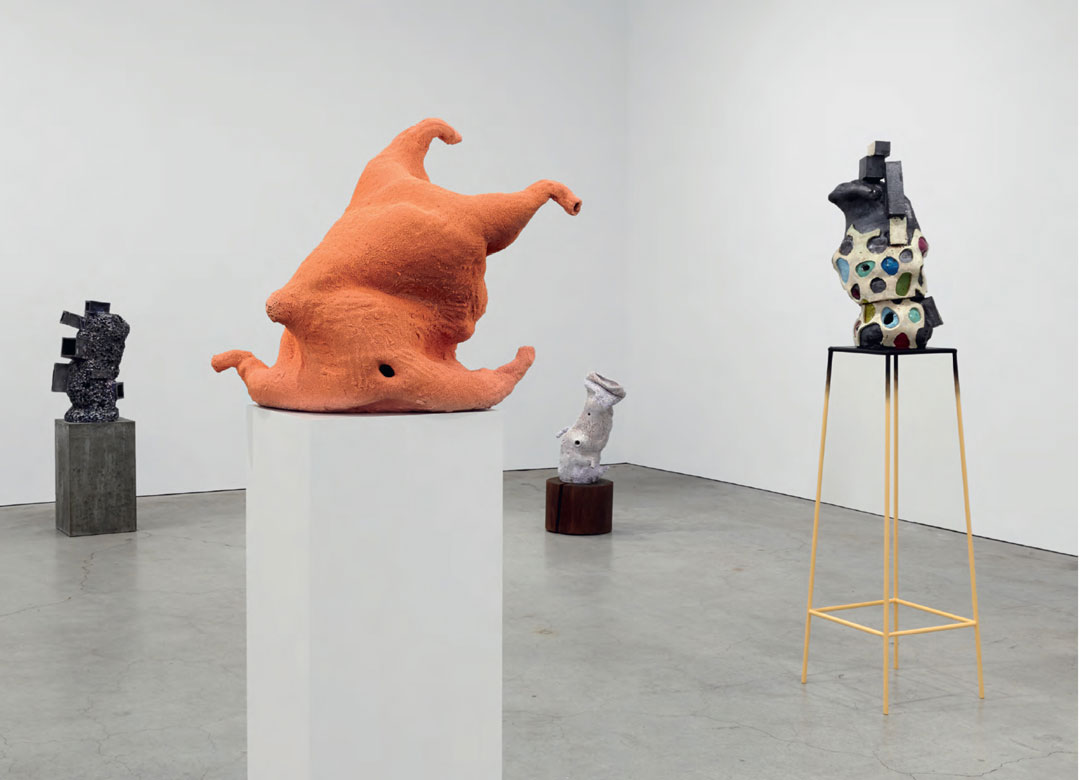
Ceramics is sometimes regarded as decorative, rather than fine arts. Does the distinction bother or annoy you? That’s fine with me, I’m committed to crossing boundaries and violating existing vocabularies. Every artist takes as much freedom as they would like to have, and I like a lot of it. I prefer to think that I’m creating a more fluid exchange of aesthetics than the one that has kept porcelain and clay within the boundary of craft and the decorative arts.
Whose work in this field do you admire? Lucio Fontana (his crucifixes in particular), Luigi Ontani, Oribe ware, Bernard Palissy, 18th century British and European porcelain, Neolithic clay figures, Red Wing American mid-century pottery, and salt-glaze pottery from all over the world. I love the ceramics of many of my peers but if I name names I’m likely to make enemies.
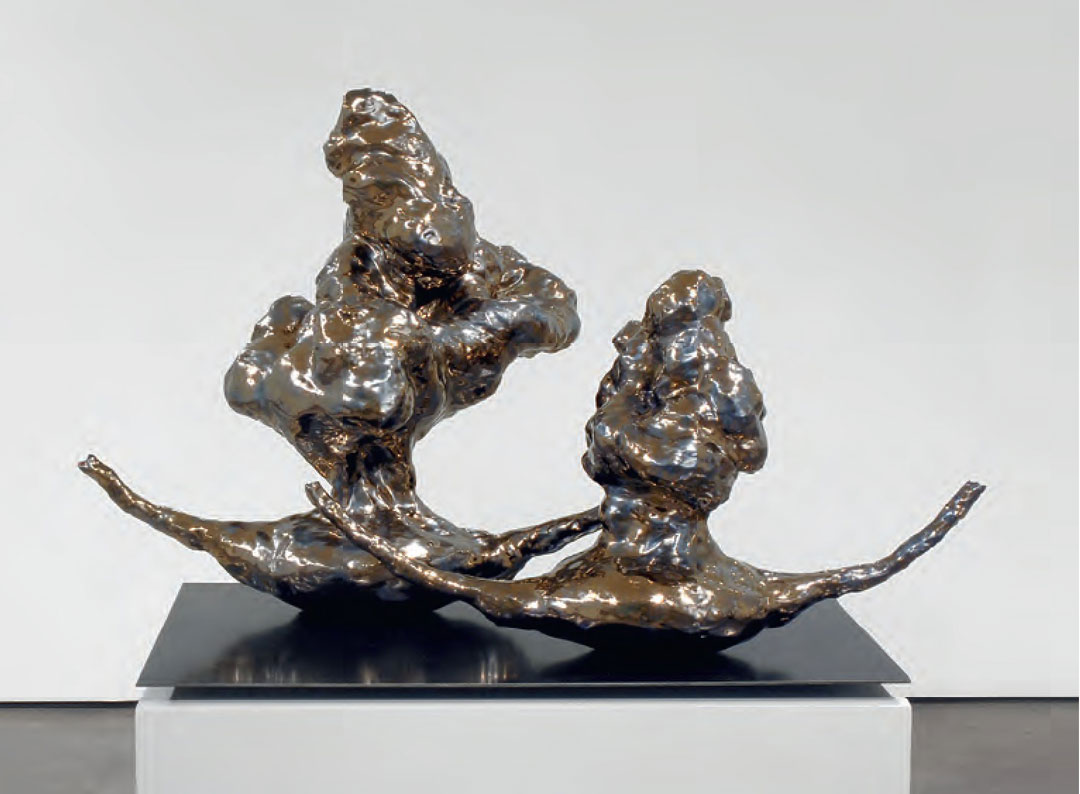
What are the hardest things for you to get ‘right’ and what are your unique challenges? I guess I don’t really want to get anything right. The challenge is not playing it safe which can sometimes be very difficult. Correctness is the thing to be avoided when making art but it’s easy to slip into comfort.
What part does the vulnerability of the material play in things? I’m not sure what the vulnerability of the material means but I think the artist is the vulnerable actor and the material is just a blank slate. The “vulnerability of the material” perhaps refers to the fact that it can be broken? Everything can be broken or damaged. A person can put a greasy palm on a painting and wreck it. That said, I believe art should always contain strength and vulnerability, as this reflects the human condition and what it’s like to live life within a body.
Is how you display a piece an important element of the work itself? __ Do you ever suggest how something might be displayed?__ I’m very interested in architecture and in the pedestal as a form of architecture. I think about the work in the room, the gallery space, and the installation as a whole in the world. All of these are essential pieces that I feel are necessary to consider. However, I’m completely aware that once a work is owned by a collector (as opposed to a museum) it’s in the world in the way that person might want it to be. It’s part of the contract with making work and letting it go, and I am OK with that.
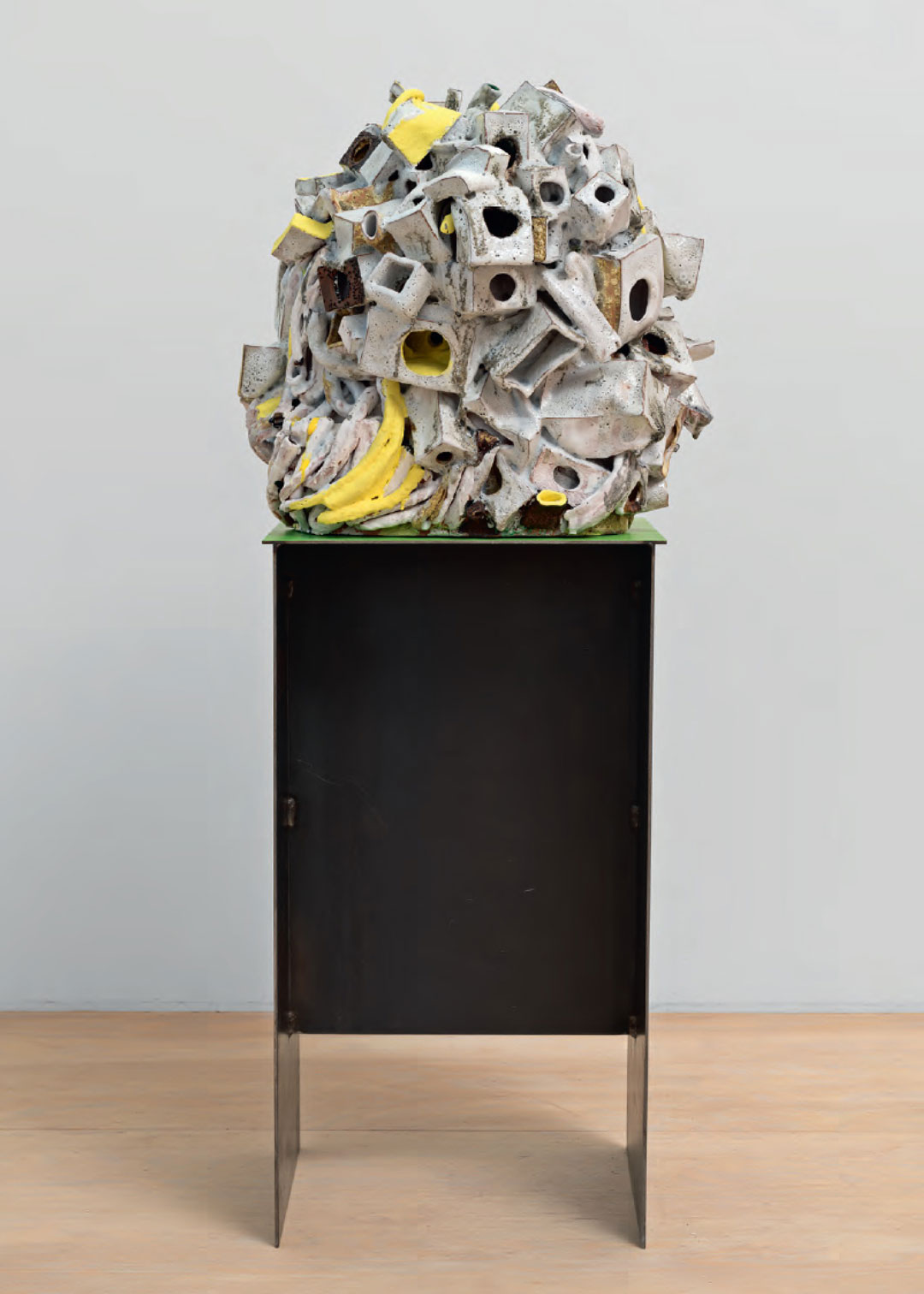
What’s next for you, and what’s next for ceramics? I’m working on a large outdoor public project, using ceramics as one of the materials. I’m interested in the language of the decorative arts being seen in a rugged context, interior vocabulary being exposed to outdoor life, and making sculptures that encourage people to pause and look. I’ve been loving my various curatorial projects (The Frick Collection, The Phillips Collection, RISD Museum) and am excited to continue the research and installation of museum collections. And what’s next for ceramics? Hopefully ceramics will proliferate and save the world, because something’s got to.
Clay and ceramics have in recent years been elevated from craft to high art material, with artworks being coveted by collectors and exhibited in museums around the world. Vitamin C: Clay and Ceramic in Contemporary Art celebrates the revival of clay as a material for contemporary artists, featuring a wide range of global talent selected by the world's leading curators, critics, and art professionals. Packed with illustrations, it's a vibrant and incredibly timely survey - the first of its kind. Buy Vitamin C here. And if you're quick, you can snap up work by many of the artists in it at Artspace.
